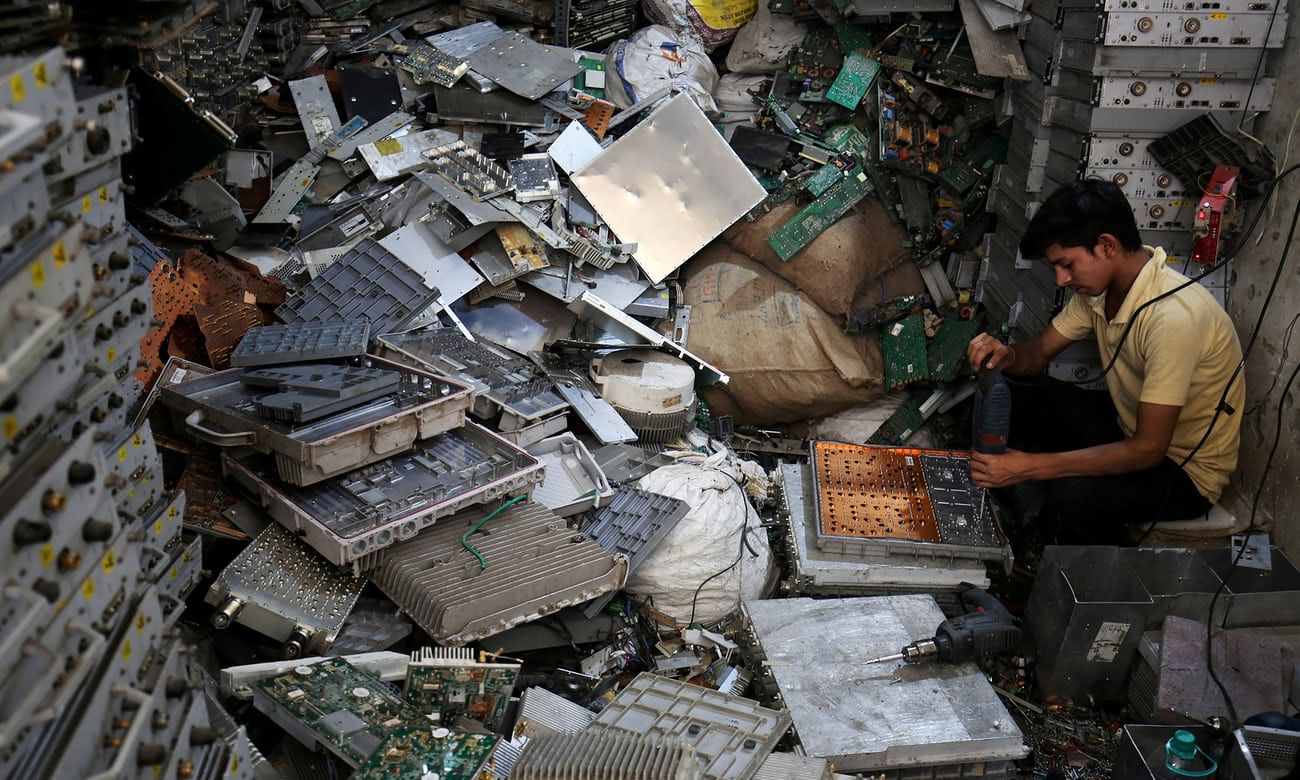Embrace Some Key Strategies to Minimize the Impact of E-Waste
Electronic waste, or e-waste, poses a significant environmental and health threat as the world becomes increasingly dependent on electronic devices. The negative impacts of e-waste are multifaceted, affecting ecosystems, human health, and the overall well-being of our planet. Addressing the negative impacts of e-waste requires a comprehensive and global approach. Improved recycling infrastructure, stricter regulations on the disposal of electronic devices, and the promotion of sustainable design practices are essential steps. At GreenTek Reman we offer holistic management plans to ensure that e-waste management needs and goals are fulfilled. We are a renowned e-waste recycling company and possess all the requirements from the appropriate governmental agencies for the processing facility and ensure proper recycling and disposal of e-waste.
Negative Impacts of E-Waste
- One of the primary concerns is the toxic substances present in electronic devices. Many electronics contain hazardous materials such as lead, mercury, cadmium, and brominated flame retardants. When improperly disposed of, these substances can leach into the soil and water, contaminating ecosystems and posing a threat to plant and animal life. The release of these toxins not only disrupts local ecosystems but can also have far-reaching consequences as they accumulate and move up the food chain, eventually affecting human populations.
- The improper disposal and management of e-waste contribute to air pollution. Burning or incinerating electronic devices releases harmful gases and particulate matter into the air, leading to respiratory problems and other health issues in nearby communities. The release of dioxins, a group of highly toxic chemicals, during the incineration of e-waste is of particular concern, as they can persist in the environment for a long time and have serious health implications.
- Economic disparities exacerbate the negative impacts of e-waste. Developing countries often become dumping grounds for electronic waste from developed nations, as stringent regulations and recycling practices are sometimes lacking. In these areas, informal recycling operations with minimal safety measures emerge, exposing workers to dangerous conditions. These workers, often unaware of the health risks, handle e-waste without proper protective equipment, leading to a higher incidence of health issues, including respiratory problems, skin diseases, and other chronic illnesses.
- The rapid pace of technological advancements contributes to the increasing volume of e-waste. As consumers upgrade their electronic devices to keep up with the latest innovations, older devices are discarded, adding to the e-waste stream. The short lifespan of many electronic products also exacerbates the problem, as they become obsolete quickly and contribute to the cycle of continuous e-waste generation.
How to Minimize the E-Waste and Its Impact?
Minimizing e-waste and mitigating its impact on the environment and human health is crucial for fostering a sustainable approach to electronic consumption. Here are several strategies to address and reduce the generation of e-waste:
Extended Product Lifespan
Encourage manufacturers to design electronic products with durability in mind. Creating devices that have a longer lifespan reduces the frequency of replacements and, consequently, the amount of e-waste generated.
Promote Reuse and Refurbishment
Establish programs that facilitate the reuse and refurbishment of electronic devices. Encourage consumers to consider buying refurbished electronics, which can extend the life of products and reduce the demand for new ones.
Implement Responsible Recycling Programs
Develop and promote recycling programs that adhere to environmental and ethical standards. Proper disposal of e-waste through certified recycling centers ensures that hazardous materials are safely extracted, minimizing their impact on the environment and human health.
Eco-friendly Design
Advocate for eco-friendly design principles in the electronics industry. This includes using materials that are easier to recycle, reducing the use of toxic substances, and designing products with disassembly and recycling in mind.
Consumer Education
Raise awareness among consumers about the environmental and health impacts of improper e-waste disposal. Educate them on the importance of responsible electronic consumption, including proper recycling methods and the benefits of choosing an e-waste recycling facility.
Take-Back Programs
Encourage and require manufacturers to establish take-back programs. These programs involve the responsible disposal and recycling of electronic devices at the end of their life cycle, with manufacturers taking responsibility for their products.
Incentives for Green Practices
Provide incentives for businesses and consumers to adopt green practices. This could include tax incentives for companies that engage in responsible e-waste management or discounts for consumers who return old devices for recycling when purchasing new ones.
Promote Modular Design
Encourage the development of modular electronic devices that allow for easy upgrades and repairs. This approach reduces the need for entirely new devices when only one component becomes obsolete or malfunctions.
Electronic Waste Awareness Campaigns
Launch public awareness campaigns to inform individuals and businesses about the impacts of e-waste. Promote the benefits of responsible e-waste recycling facility.
Get In Touch With GreenTek Reman!
At GreenTek Reman we provide businesses and organizations reliable solutions for their e-waste management. We are a renowned e-waste recycling Noida and other parts of the country.
We take into account effective recycling methods that ensure the safe disposal of electronic devices while maximizing the recovery of precious materials.


